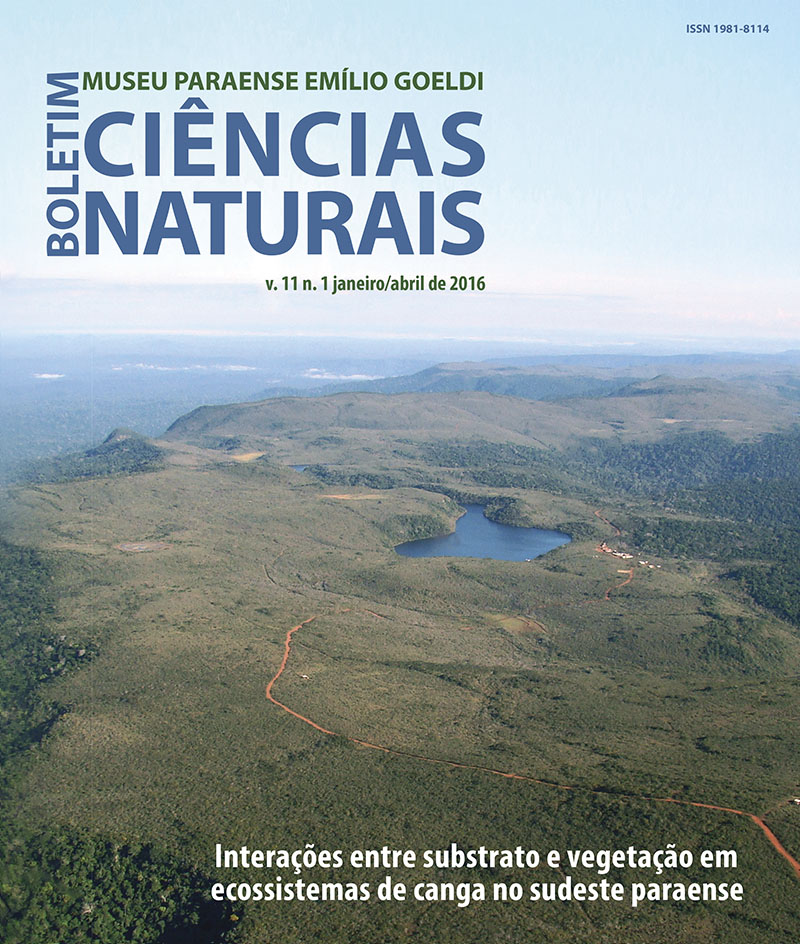Geoenviroments, soils and carbon stocks at Serra Sul of Carajás, Para State, Brazil
DOI:
https://doi.org/10.46357/bcnaturais.v11i1.462Keywords:
Carajás, Serra Sul, Iron stone, Plinthosol, Amazon, Soil carbon stocksAbstract
The discovery of mineral deposits in the Serra de Carajás, from the 1960s, raised a great concern in the region, resulting in research aimed at the economic exploitation of these deposits. However, little is known about the geoenvironments at the ironstone plateau, hindering measures for their present and future conservation. The objective of this study was to characterize the main soils from geoenvironments of Serra Sul, with emphasis on soil morphological, physical and chemical properties, in order to deepen the soil knowledge and support the environmental recovery and restoration of areas degraded by mining activities. Were defined four major geoenvironments: slopes with rocky fields of banded ironstone; forested concave slopes; depressions and poorly drained flats; and doliniform closed lakes. The soils associated with these geoenvironments were: shallow soils with continuous ironstone layer (litoplinthic horizon); soil with concretionary character; and organic or dark-humic soil. The interplay between soils and geoenvironments showed a strong control of soils on the different vegetation types, linking soil depth to the vegetation height and biomass. The organic matter is crucial for the soil cation exchange capacity (CEC) and nutrient cycling. High amounts of Soils organic carbon (range 54-124 kg m-2) were detected in wetlands (Buritizais and Campos Brejosos), highlighting an important environmental service of the Carajás Plateau. We recommend that topsoil must be separated and used in the environmental recovery of degraded, mined areas, andfor soil reclamation. The geoenvironmental continuum observed at a local scale highlights that measures aiming at protecting isolated spots or zones (caves, depressions, for instance) in a context of ecological gradient, may not offer an effective protection.
Downloads
Published
Issue
Section
License
Publication means fully assigning and transferring all copyrights of the manuscript to the journal. The Liability Statement and
Assignment of Copyrights will be enclosed with the notice of acceptance. All the authors must sign the document and return it to the journal.






